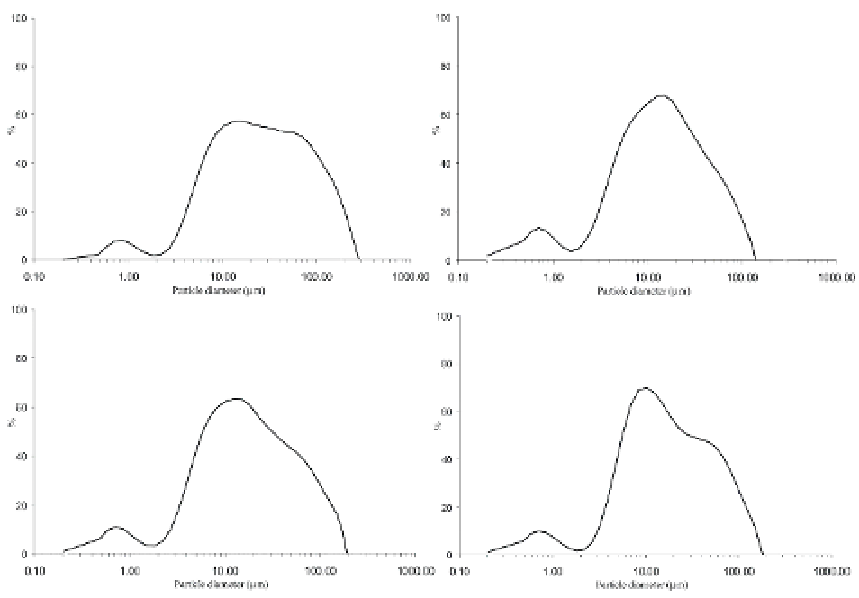Agriculture Reference
In-Depth Information
Four coal fly ashes resulting from the combustion of four different coal materials were
supplied by ENEL thermoelectric powder plants in Brindisi and Venice - Italy.
The particle size distribution was studied by laser granulometry using the principle of laser
diffraction. The fly ash samples were also analysed by SEM-EDS. This analysis provided
detailed imaging information about the morphology and surface texture of each single
particle, as well as the elemental composition of samples.
The chemical abundance of major elements was determined by X-ray fluorescence (XRF)
(Franzini et al., 1075; Leoni & Saitta, 1976) and the concentrations of potentially harmful
trace were measured by inductively couple plasma spectrometry (ICP-MS) after total acid
dissolution treatment of the samples.
The mineral composition of fly ashes was determined by XRD and the quantitative XRD
analysis of crystalline phases was carried out by using the reference intensity ratio (RIR)
method (Chung, 1974a; 1974b; 1975) combined with the “method of known additions”
(Snyder & Bish; 1989). The amount of amorphous materials was calculated through the
subtraction of crystalline components. Finally, thermogravimetric analyses were carried out
in order to find out the concentration of unburned carbon.
The complete resulting distribution of the particles of fly ash samples are shown in Figure 1.
Two samples are mainly made of particles whose diameters range from 5 to 50 µm, the other
fly ashes show two main set ranges from 5 to 30 µm and from 70 to 90 µm. All the samples
analyzed show an ultra fine fraction ranging from 0.5 to 2.0 µm. This slight variation in size
distribution could be due to similar methods for collecting fly ash used in the different
power stations.
Fig. 1. Particle size distribution of the fly ashes samples.


